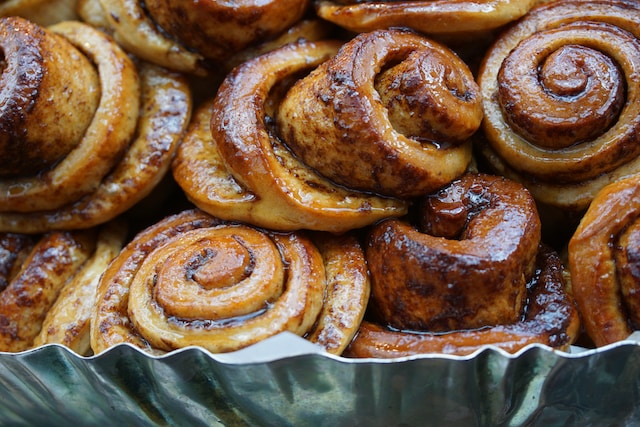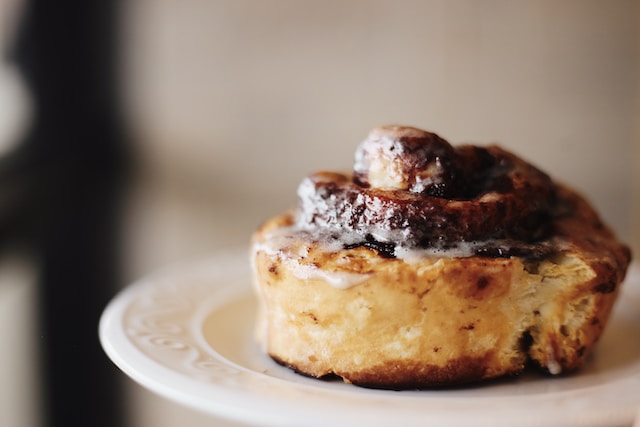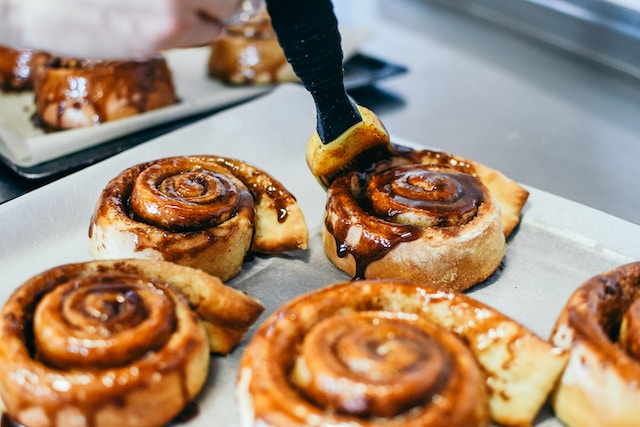Trying to determine how much to charge for homemade cinnamon rolls? With hundreds of bakery transactions happening on Airmart each week, we know a thing or two about good pricing.
Anyone can buy a cannister of cinnamon rolls and pop them in the oven. But your customers are seeking out homemade cinnamon rolls and they’re willing to pay more for them. The pricing doesn’t have to be on par with store-bought rolls. After all, you bake with heart and soul and your personal baking flair has value. Even if baking is your passion, it still needs to put food on the table!
Calculating a suitable price for your delicious homemade cinnamon rolls involves taking a number of key factors into account.

Bakery Pricing Factors
Totaling Variable Costs
1. Cost of Ingredients: This is the first and most essential step towards deciding your price. Calculate the total cost of all ingredients required for each batch of cinnamon rolls. Remember to include every ingredient, right from the flour and yeast, down to the cinnamon and icing sugar. If you’re using organic or high-end ingredients, your cost will be higher, and this should reflect in your final price.
2. Overhead Costs: Overhead costs refer to all the non-direct costs associated with making your cinnamon rolls. This includes utility bills, equipment depreciation, packing materials, rental costs, if any, and more. While these costs might seem insignificant on their own, when added up, they considerably impact your pricing.
3. Market Prices: Even though you’re making homemade cinnamon rolls, it’s always good to keep an eye on what your competitors, including local bakeries and supermarkets, are charging. This will give you a good idea of your local market’s price range and provide you with a baseline for your pricing.

Determining value
Time and Labor: Your time is valuable. Calculate how much time you spend preparing one batch of rolls, from mixing the dough to the final icing drizzle. Combine this with your desired hourly wage to determine your labor cost.
Profit Margin: Now that you’ve calculated your total expenditure, it’s time to decide on your profit margin. This will completely depend on your personal or business financial goals. A reasonable profit margin to aim for is around 20-30%, but this can vary depending on your business model.
Unique Selling Proposition (USP): If your homemade cinnamon rolls are unique in any way, this can also affect your price. For example, if your cinnamon rolls are gluten-free, vegan, or custom-made for certain dietary preferences, this can add value to your product, and you can charge a higher price.

How much should I charge for homemade cinnamon rolls?
To determine the final price, add up your ingredient costs, labor, overhead costs, and your desired profit margin. Divide this total by the number of cinnamon rolls you produce in one batch, and this will give you the price per roll. Always remember that the price should reflect the quality, time, effort, and love you put into creating your homemade cinnamon rolls.
Knowing how much to charge for homemade cinnamon rolls is truly about understanding the value of your product and balancing that with market trends and consumer needs. It’s about recognizing the true value of your labor and the quality you put forth, in measurement, preparation, baking, and presentation. So, don’t undersell your delicious treats but also ensure you’re not pricing yourself out of the market. After running your numbers, you can and should gain a fair price for your hard work. Happy baking and selling!